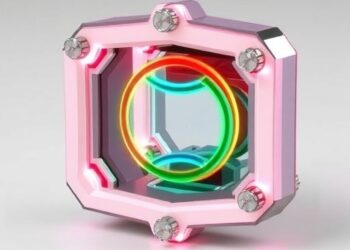Scientists have pinpointed the origin and composition of the asteroid that caused the mass extinction 66 million years ago, revealing it was a rare carbonaceous asteroid from beyond Jupiter, according to a new study. The findings help resolve long-standing debates about the nature of Chicxulub impactor, reshaping our understanding of Earth’s history and the extraterrestrial rocks that have collided with it. Earth has experienced several mass extinction events. The most recent event occurred 66 million years ago at the boundary between the Cretaceous and Paleogene eras (K-Pg boundary) and resulted in the loss of roughly 60% of the planet’s species, including non-avian dinosaurs. The Chicxulub impactor, a massive asteroid that collided with Earth in what is now the Gulf of Mexico, is thought to have played a key role in this extinction event. Evidence includes high levels of platinum-group elements (PGEs) like iridium, ruthenium, osmium, rhodium, platinum, and palladium in K-Pg boundary layers, which are rare on Earth but common in meteorites. These elevated PGE levels have been found globally, suggesting the impact spread debris worldwide. While some propose large-scale volcanic activity from the Deccan Traps igneous province as an alternative source of PGEs, the specific PGE ratios at the K-Pg boundary align more with asteroid impacts than volcanic activity. However, much about the nature of the Chicxulub impactor – its composition and extraterrestrial origin – is poorly understood.
Scientists have pinpointed the origin and composition of the asteroid that caused the mass extinction 66 million years ago, revealing it was a rare carbonaceous asteroid from beyond Jupiter, according to a new study. The findings help resolve long-standing debates about the nature of Chicxulub impactor, reshaping our understanding of Earth’s history and the extraterrestrial rocks that have collided with it. Earth has experienced several mass extinction events. The most recent event occurred 66 million years ago at the boundary between the Cretaceous and Paleogene eras (K-Pg boundary) and resulted in the loss of roughly 60% of the planet’s species, including non-avian dinosaurs. The Chicxulub impactor, a massive asteroid that collided with Earth in what is now the Gulf of Mexico, is thought to have played a key role in this extinction event. Evidence includes high levels of platinum-group elements (PGEs) like iridium, ruthenium, osmium, rhodium, platinum, and palladium in K-Pg boundary layers, which are rare on Earth but common in meteorites. These elevated PGE levels have been found globally, suggesting the impact spread debris worldwide. While some propose large-scale volcanic activity from the Deccan Traps igneous province as an alternative source of PGEs, the specific PGE ratios at the K-Pg boundary align more with asteroid impacts than volcanic activity. However, much about the nature of the Chicxulub impactor – its composition and extraterrestrial origin – is poorly understood.
To address these questions, Mario Fischer-Gödde and colleagues evaluated ruthenium (Ru) isotopes in samples taken from the K-Pg boundary. For comparison, they also analyzed samples from five other asteroid impacts from the last 541 million years, samples from ancient Archaean-age (3.5 – 3.2 billion-years-old) impact-related spherule layers, and samples from two carbonaceous meteorites. Ficher-Gödde et al. found that the Ru isotope signatures in samples from the K-Pg boundary were uniform and closely matched those of carbonaceous chondrites (CCs), not Earth or other meteorite types, suggesting that the Chicxulub impactor likely came from a C-type asteroid that formed in the outer Solar System. They also rule out a comet as the impactor. Ancient Archean samples also suggest impactors with a CC-like composition, indicating a similar outer Solar System origin and perhaps representing material that impacted during Earth’s final stages of accretion. In contrast, other impact sites from different periods showed Ru isotope compositions consistent with S-type (salicaceous) asteroids from the inner Solar System.
Podcast: A segment of Science‘s weekly podcast, related to this research, will be available on the Science.org podcast landing page after the embargo lifts. Reporters are free to make use of the segments for broadcast purposes and/or quote from them – with appropriate attribution (i.e., cite “Science podcast”). Please note that the file itself should not be posted to any other Web site.
Journal
Science
Article Title
Ruthenium isotopes show the Chicxulub impactor was a carbonaceous-type asteroid
Article Publication Date
16-Aug-2024




